George
Jones

-
Inducted1992
-
Born
September 12, 1931
-
Died
April 26, 2013
-
Birthplace
Saratoga, Texas
George Jones’s immense, singular vocal gifts made him one of the most influential singers in country music history.
George Jones launched his recording career in East Texas in the early 1950s, and at the start of the twenty-first century he was still going strong. Yet it was more than sheer longevity or the almost religious purity of his hardcore country instincts that made him such a towering, influential figure: in many ways, Jones was one of country music’s last vital links to its own rural past.
Like Hank Williams before him, Jones emerged—quite unintentionally—as an archetype of an era that most likely will never come around again. He was a singer who earned his stature the hard way: by living his songs. His humble origins, his painful divorces, his legendary drinking and drugging, and his myriad financial, legal, and emotional problems over the years confirmed his sincerity and enhanced his mystique, earning him a cachet that, in country music circles, approached canonization.
A Link to Country Music’s Rural Past
Born George Glenn Jones in a log cabin in an oil patch settlement in a remote East Texas region known as the Big Thicket, Jones found early refuge in music from the rages of an alcoholic father. As a child, he sang for tips in the streets of Beaumont, Texas, where he moved at an early age with his parents into a government-subsidized housing project. Williams, Roy Acuff, and Lefty Frizzell—whom Jones most resembled as a vocalist—comprised his youthful triumvirate of influences.
In the late 1940s, Jones made his radio debut singing with a friend on KTXJ in Jasper, Texas. A year or so later he began backing husband-and-wife team Eddie & Pearl, and while performing with them on Beaumont’s KRIC, he met, for the one and only time, his idol Williams, who dropped by to sing a song and promote a local show date.
In 1950, Jones was married for the first of four times, to Dorothy Bonvillion, but the couple divorced slightly more than a year later. In her petition, Bonvillion cited her ex-husband’s “violent temper” and asserted he was “addicted to the drinking of alcoholic beverages,” twin motifs that resurfaced again and again to wreak havoc in Jones’s life. After several incarcerations for nonpayment of support (he and Bonvillion had a daughter during their brief marriage), Jones sought refuge in the Marine Corps.
Songs
00:00 / 00:00
00:00 / 00:00
00:00 / 00:00
From Houston to Nashville
In January 1954, back in Houston, Texas, and back in civilian clothes, Jones cut his first record, the prophetically titled original “No Money in This Deal.” The session took place in the crude home studio of Jack Starnes, one of the original owners of Starday, a regional label that released Jones’s earliest records. Starnes’s partner, local jukebox operator Harold W. “Pappy” Daily, assumed the roles of Jones’s producer and manager, roles he continued to play until 1970.
“Why, Baby, Why,” Jones’s first Top Five hit, which he co-wrote, was released on Starday in 1955. When he moved to Mercury Records and began recording in Nashville shortly thereafter, the hits kept coming: “Color of the Blues,” “White Lightning” (his first #1, in 1959), “Who Shot Sam,” “The Window Up Above” (also written by Jones), and “Tender Years” are some of the early classic titles from Jones’s vast catalog.
In 1954, Jones married his second wife, Shirley Ann Corley, after a two-week courtship. They divorced in 1968.
In the 1960s, Jones recorded for the United Artists and Musicor labels. The hits continued, though his style had begun to mellow and season somewhat from the jittery honky-tonk of “Why, Baby, Why” and the handful of rockabilly sides Jones reluctantly cut in 1956 under the pseudonym Thumper Jones. High points of this era were hits such as “She Thinks I Still Care,” “The Race Is On,” “Love Bug,” “Walk Through This World with Me,” and “A Good Year for the Roses.”
Working with Billy Sherrill and Tammy Wynette
At about the turn of the decade, two significant things happened to Jones. In 1969, he married singer Tammy Wynette, already a star in her own right. Over the next decade—even long after they divorced in 1975—they recorded classic duet hits such as “The Ceremony,” “We’re Gonna Hold On,” “Golden Ring,” “Near You,” and “Two Story House.”
Then, in 1971, Jones signed with Epic Records and began working with producer Billy Sherrill, who was already producing Wynette and produced most of the aforementioned Jones-Wynette duets. Sherrill would also, in the next decade or so, coax out of the temperamental, often hard-drinking Jones some of his all-time best vocal performances. “A Picture of Me Without You,” “The Grand Tour,” “The Door,” and “Bartender’s Blues” are a few commercial and aesthetic high points of the Jones-Sherrill collaboration.
The 1970s and early 1980s were, in the wake of his divorce from Wynette, dark times for Jones. Due to alcohol and cocaine addiction, he was arrested and hospitalized numerous times. He missed dozens of performances (earning the nickname “No-Show Jones”) and was ensnared in legal and financial problems. His health grew precarious, and his weight plummeted to ninety-seven pounds. Yet in the midst of this adversity, Jones recorded “He Stopped Loving Her Today,” a mournful ballad that hit #1 in 1980, became his first million seller, won a Grammy for Best Male Country Vocal Performance, and contributed to him winning the Country Music Association’s Male Vocalist of the Year award in 1980 and 1981.
Videos
“He Stopped Loving Her Today”
Austin City Limits, 1986
“Golden Ring” withTammy Wynette
Country Music Hit Parade, hosted by Jimmy Dean, 1977
Like Hank Williams before him, George Jones emerged—quite unintentionally—as an archetype of an era that most likely will never come around again. He was a singer who earned his stature the hard way: by living his songs.
Photos
-
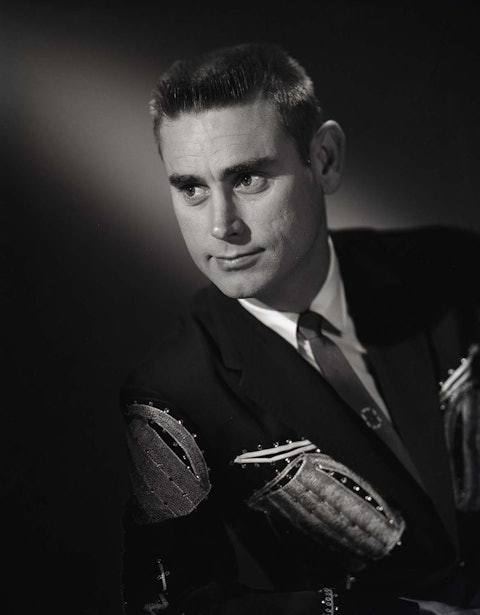
George Jones, 1961. Photo by Walden S. Fabry Studios.
-
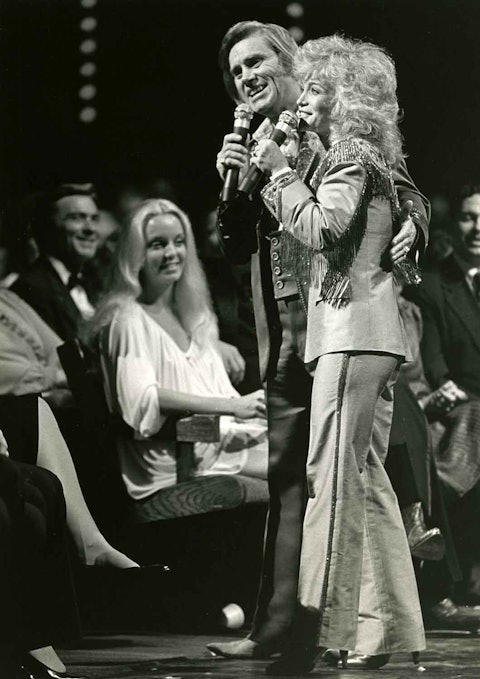
George Jones and Barbara Mandrell perform together at the Country Music Association Awards, 1981.
-

George Jones and Pappy Daily with awards given to Jones by Billboard, Music Reporter, and Cash Box magazines, 1963. Photo by Walden S. Fabry Studios.
-

George Jones and Tammy Wynette performing together, 1974. Photo by Bill Goodman for the Nashville Banner.
-
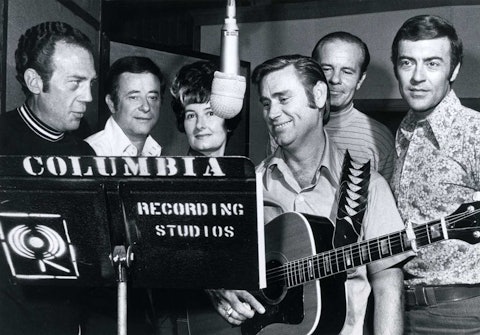
George Jones and the Jordanaires (from left: Hoyt Hawkins, Gordon Stoker, Millie Kirkham, Neal Matthews Jr., and Ray Walker) during a recording session at Columbia Records Studio B, formerly Quonset Hut Studio, 1970.
-
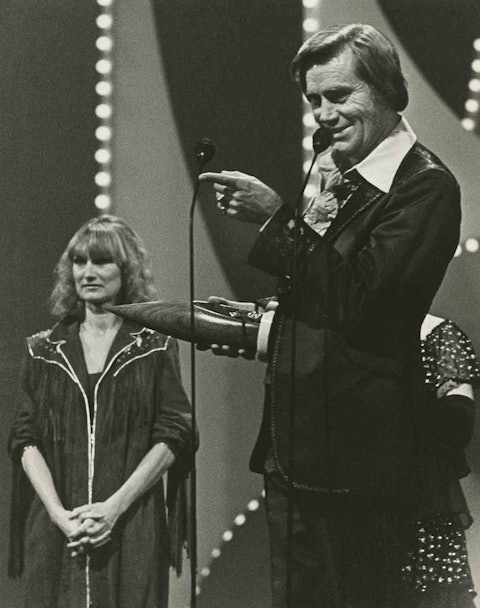
George Jones at the Country Music Association Awards, 1981.
-
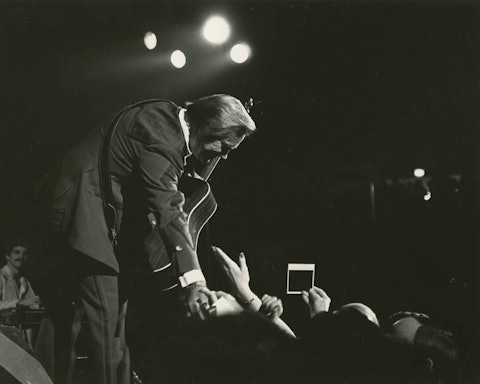
George Jones greets fans from the stage, 1983.
-

George Jones, 1996. Photo by Raeanne Rubenstein.
-

George Jones, Tammy Wynette, and Billy Sherrill, 1973. Photo by J. Clark Thomas.
-

George Jones and Merle Haggard, 1982. Photo by Alan Messer.
“No-Show Jones” No More
In 1983, Jones married his fourth wife, Nancy Sepulvado, thereby beginning his gradual rehabilitation. He signed with MCA in 1990 and made a string of critically lauded recordings on that label. The clean and sober Jones of the late eighties and early nineties, though still recording credible music, was all but banished from the country charts, yet he emerged as a highly respected and cherished figure. His 1996 autobiography, I Lived to Tell It All, was a hardcover best-seller.
Jones also continued to win industry awards. His recording of “You Don’t Seem to Miss Me” with Patty Loveless was named the CMA’s Vocal Event of the Year in 1998, and he received the same award in 2001 for a collaboration with Brad Paisley, Buck Owens, and Bill Anderson. In 1999, Jones survived a near-fatal car crash and later released the album Cold Hard Truth on Asylum. “Choices,” a single from that album, received a Grammy for Best Male Country Vocal Performance. Chastened by his accident, Jones gave up alcohol and cigarettes and turned to sacred music for the 2003 double CD The Gospel Collection: George Jones Sings the Greatest Stories Ever Told on BNA/Bandit.
One of country music’s most revered entertainers, Jones received the prestigious Kennedy Center Honors for lifetime achievement in 2008. In late 2012, he announced his farewell tour, which was to conclude with a show featuring Garth Brooks, Charlie Daniels, Alan Jackson, the Oak Ridge Boys, Kenny Rogers, Randy Travis, and many others at Nashville’s Bridgestone Arena on November 22, 2013. However, Jones was hospitalized on April 18, 2013, with fever and irregular blood pressure and died April 26, 2013, at Vanderbilt University Medical Center in Nashville.
—Bob Allen
Adapted from the Country Music Hall of Fame® and Museum’s Encyclopedia of Country Music, published by Oxford University Press



